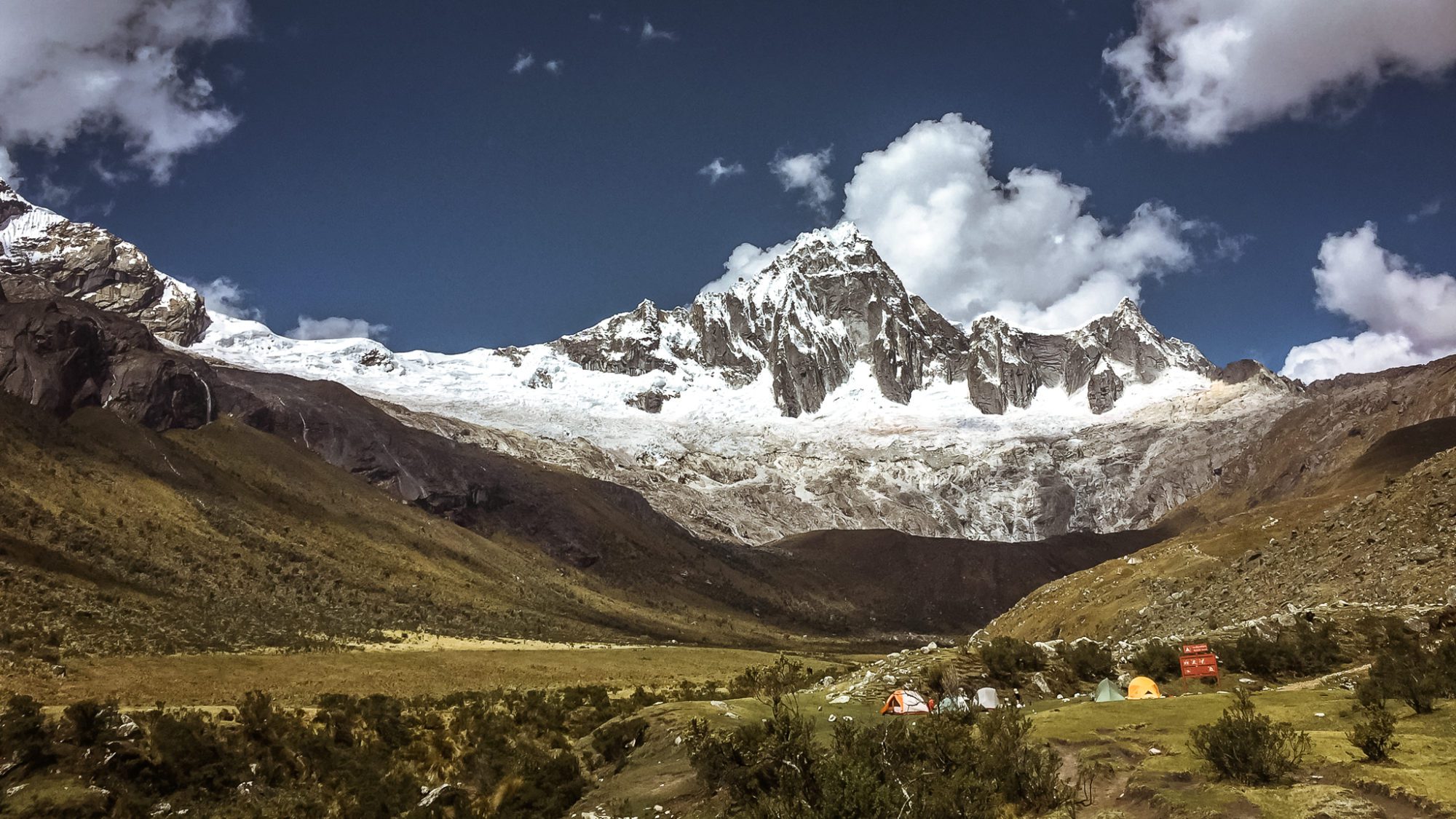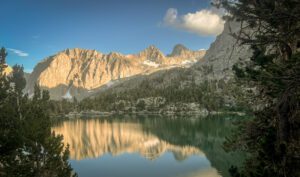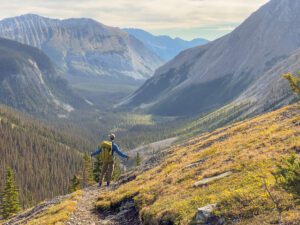Choosing the best backpack for Peru is a challenge. Peru’s incredible history and geopgraphic diversity makes it a paradise for cultural exploration, hiking and trekking, and every kind of adventure tourism. This means you likely have a lot to pack. Should you pack a dedicated hiking backpack or would a more conventional travel backpack suffice?
I distinctly remember the struggle of choosing a backpack for my 3 week trip through Peru. Since my first trip on the Banana Pancake Trail, I’d held steadfast to the belief that I could cram everything I needed into a 30L bag. Unfortunately, this task was now proving next to impossible. I had several multi-day treks planned and needed to fit hiking clothes, hiking boots and a sleeping bag into my pack. No matter how hard I tried, my minimalist packing wasn’t working. Ultimately, I capitulated, shoved all my gear into a 60L hiking backpack, and became a true “backpacker” for the first time in my 27 years of travel. Did I love it so much that I decided to buy a pair of elephant pants and grow dreadlocks? Not quite…in fact my choice of backpacks was the biggest mistake I made on what was otherwise an incredible trip.
If you’ve been struggling to decide which backpack is best for your trip to Peru. this was written just for you. Whether you’re hiking the Inca Trail, spending a week in Cusco, or independently hiking in the Cordillera Blanca, this post will ensure you pick the best backpack for your trip to Peru. So, let’s dive in!
What backpack did I use for traveling in Peru?
I used a 60L Arc’teryx hiking backpack as my main bag on my 3 week adventure through Peru. I made the decision to take this bag as I needed to carry gear for multi-day hikes on the Inca Trail and the Santa Cruz Trail in addition to the usual travel wardrobe I’d wear during the rest of my time in Peru.
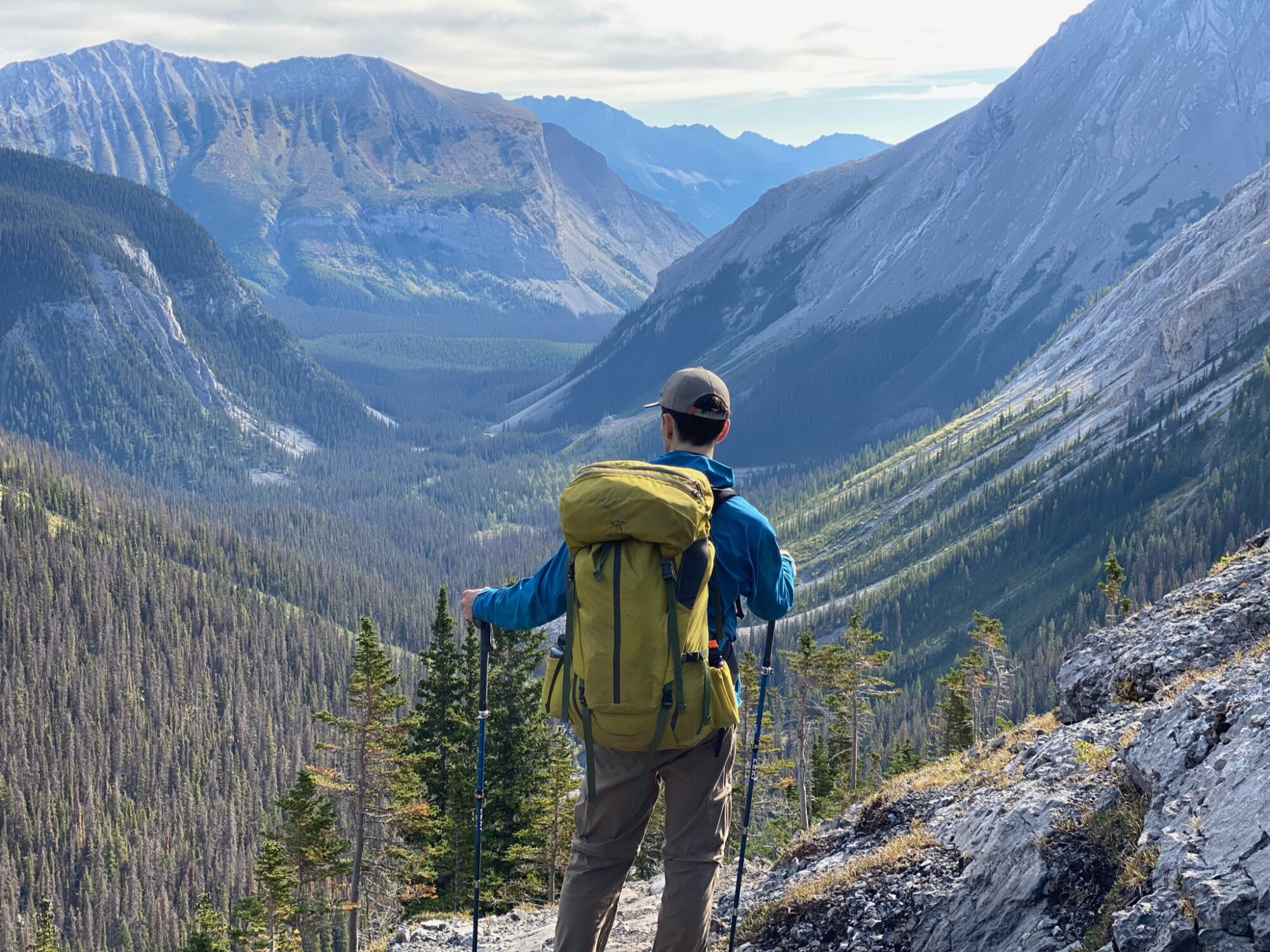
What worked about this backpack
It was comfortable to carry, ergonomic, and easily fit everything I needed to bring for these hikes and the rest of my trip. It’s a great bag for hiking, but maybe not as great for travel.
What didn’t work
Organization was a nightmare with the top-loading structure. Every time I needed something it was inevitably in the very bottom. This became even more frustrating when I needed to dump the contents of my backpack in the middle of a busy bus station or street corner to find something. 💩
Ultimately, I didn’t even need it for hiking! It was too large to bring on my treks, as I had the luxury of a porter (Inca Trail) and a mule (Santa Cruz) to help carry my gear. On both treks I brought only a small daypack with room for a few layers, water and snacks and the rest was carried for me. The big bulky hiking backpack stayed behind at the hostel holding the rest of my luggage.
Now that we’ve learnt from my mistakes let’s find out what’s best for you.
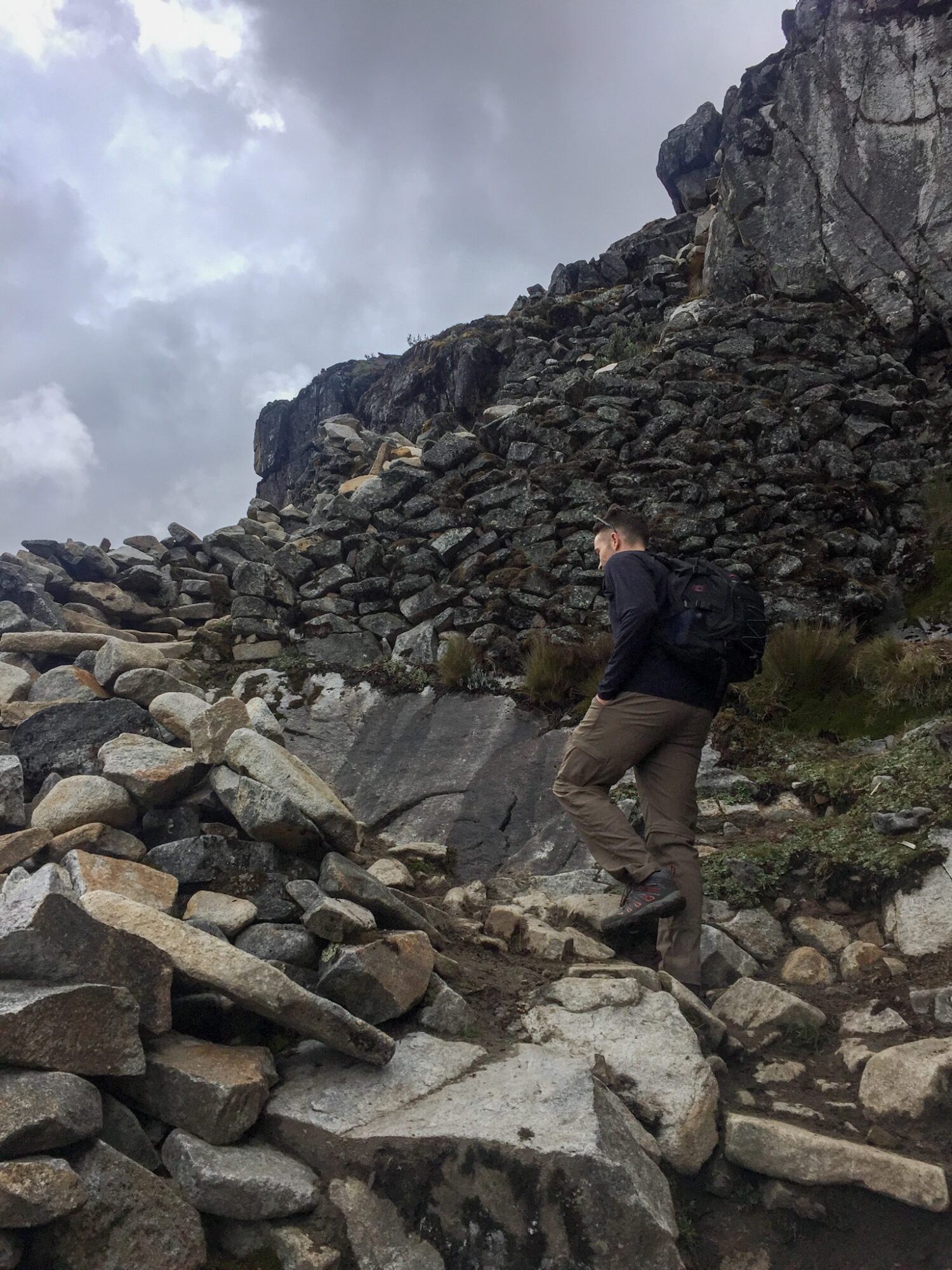
How big of a backpack do you need for Peru and what style of pack is best?
Your backpack size and style should be dictated primarily by what you’re going to be doing in Peru. Are you planning to do a multi-day trek like the Inca Trail, Salkantay or Santa Cruz? If so, will you be bringing your own sleeping bag or substantial amounts of hiking gear? Will you be taking guided treks or hiking independently? Are you planning on sticking to the sites in Cusco or Arequipa with a day trip to Machu Picchu or the Sacred Valley?
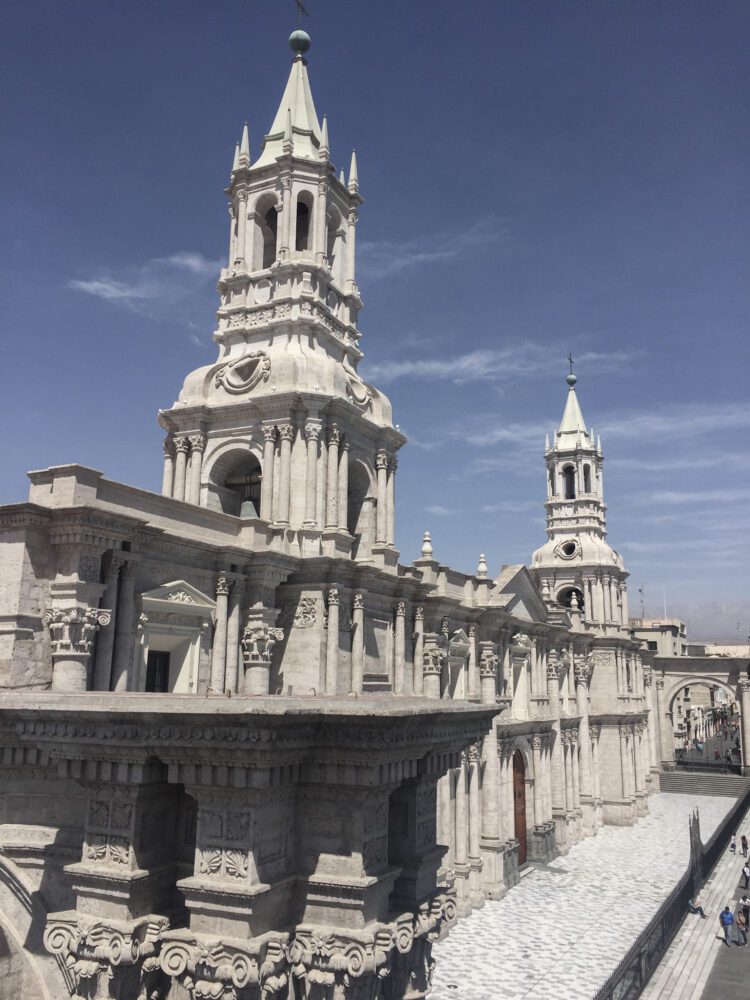
A carry-on backpack
These backpacks are generally in the 30-45L range and designed as a one bag solution that is carry-on compliant. This category of backpack is typically built for shorter trips or minimalist travel. They’re often easy to pack with clamshell style openings, but may not have enough space for those with large gear requirements.
Choose a carry-on backpack for Peru if you fall in one of these categories:
- Not planning any multi-day treks during your time in Peru and are a minimalist packer comfortable fitting everything in a carry-on size bag.
- Planning multi-day treks, but renting all bulky gear (sleeping bag, sleeping mat etc.). You’re also comfortable wearing your hiking clothes and hiking footwear throughout your trip and are happy to wear your trail runners to explore Cusco or out to any Pisco bar (see minimalist packer above).
Great choices in this category include the: Cotopaxi Alpa or Patagonia Black Hole MLC
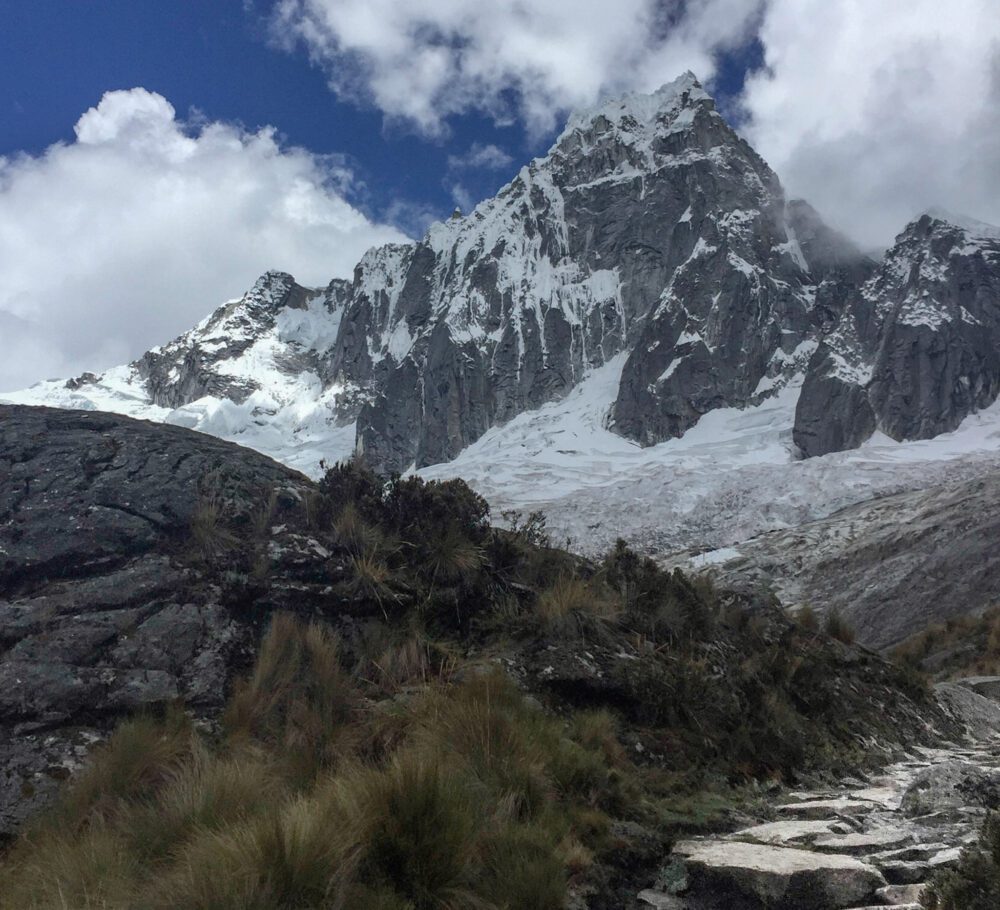
A full-size travel backpack
Full size travel backpacks are a hybrid of hiking style backpacks and the more minimalist carry-on style. They range in size from around 55 to 70L, provide an elevated organizational experience, and offer more robust straps/suspension systems for carrying larger loads (compared to the carry-on size). These backpacks are typically built for long term travel or trips that have larger gear requirements.
Choose a full-size travel backpack for Peru if you fall in of these categories:
- You’re packing multiple pairs of shoes. You’re planning to bring hiking boots for your trek to Machu Picchu, sandals for the beach , and a pair of sneakers for nights out in Cusco.
- You’re not planning on trekking, but you need to bring a few more items than a carry-on can fit.
- You’re planning to do a multi-day trek like the Inca Trail and are packing a sleeping bag, sleeping mat and other hiking gear which you’ll need to carry throughout your travels in Peru.
- During any multi-day treks you plan on hiking with a day pack only and plan on hiring a porter or mule to carry your extra gear.
Great choices in this category include the: Khmer Explorer Travel Set or the Osprey Farpoint(Men) or Fairview (Women).
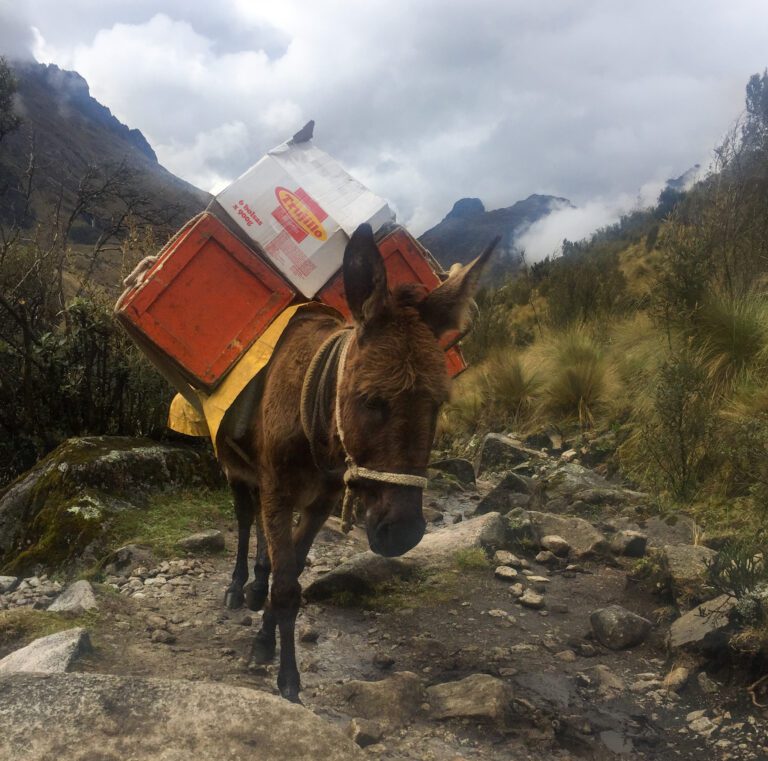
A hiking/backpacking backpack
These backpacks are a great choice if your primary goal for your Peruvian trip is to hike until your legs give out. They’re purpose built for hiking and backpacking and designed to carry gear comfortably over long distances everyday. The biggest downside with using a hiking style backpack for your trip to Peru is their lack of easy access and packability. Expect to dump everything out to find the one item you need. These styles of backpacks also give off more of the traditional “backpacker look”, which may be aspirational to some or cringeworthy to others.
Choose a hiking style backpack for Peru, If you fall into one of these categories:
- Plan to do a multi-day hike independently, without a tour company or with a guide only. (This isn’t an option for the Inca Trail, but many other treks in Peru can be done independently).
- You’re planning a trek(s) with an operator, but you plan on carrying the vast majority of gear on your own (sleeping bag, sleeping mat, all clothing). Maybe you’re saving money by negating the porter on the Inca Trail, or maybe you just want even more exercise…
Great minimalist/ultralight choice in this category: Hyperlite Southwest
Great lightweight option in this category: Osprey Exos (men) or Eja (women)
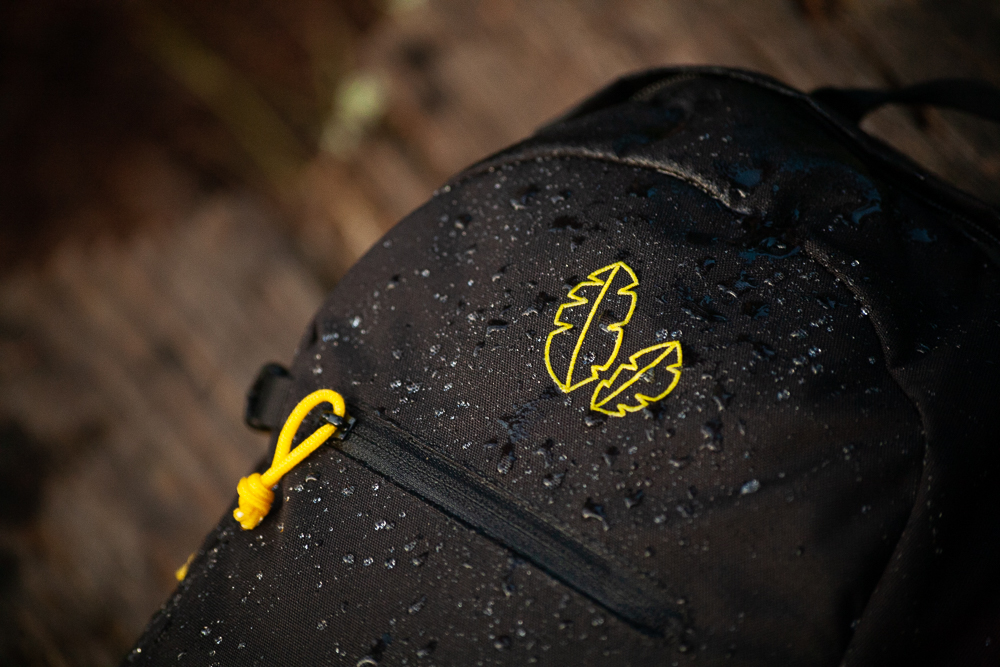
Essential features should you look for when choosing the perfect backpack for Peru
Regardless of which type of backpack you choose for your trip there are a couple essential features you’ll want to have regardless.
Weather resistance
Peru’s climate is unmatched in diversity. From bone dry desert to rainforest to high alpine. Make sure your backpack is prepared for anything the environment throws at you and features some form of weatherproofing.
Adjustable Shoulder Straps
Comfort is king, especially when you’re carrying everything on your back. Look for adjustable and well padded shoulder straps that can be tailored to fit your size of torso.
Durability
No matter which type of backpack you’ve chosen, invest in quality. A great backpack can last you a lifetime and save you the major pain of a blown zipper mid-trip. Look for premium quality materials including high denier Nylon or Polyester and YKK zippers to ensure durability.
Hip Belts with Pockets
For larger backpacks, hip belts are essential. They take a majority of the weight of your shoulders and help you carry heavy loads with ease. Many backpacks offer convenient and safe storage pockets built into the hip belt, perfect for stashing your phone.
Any other things to look for when choosing the right pack?
Theft Resistance
Lockable zippers and hidden pockets can provide peace of mind during bus rides or when leaving your bag behind in hostels or during treks.
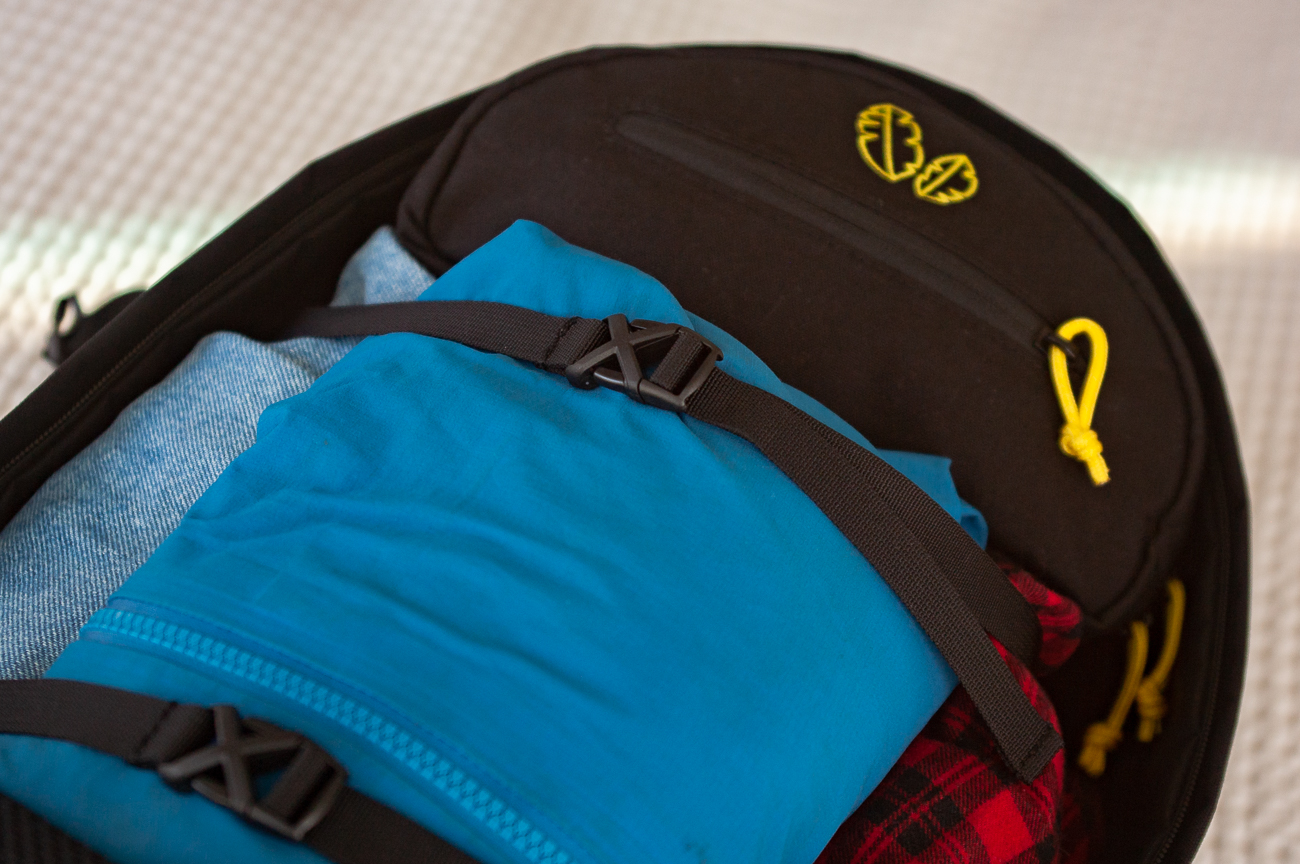
Organization
Packability is underrated. A great backpack makes packing and unpacking easier, saving you time and stress. If you’ve ever rushed to pack for a flight, bus, or check-out time you know the value of having an easy to pack bag. If you’re using a hiking backpack, consider investing in packing cubes or stuff sacks to help overcome the limitations of a top loading backpack. They’re also convenient for storing things at your hotel/hostel if you intend to use your backpack on any treks.
Laptop Sleeve
If you’re only carrying one bag and need to bring your laptop along, having a laptop sleeve may be something you consider in a backpack. That said, I personally prefer to carry a small daypack for my laptop or utilize a minimalist laptop pouch as opposed to having it built into my main backpack. I’m just not too crazy about having to unload the contents of my entire travel backpack, every time I want to carry my laptop to a coffee shop. I’d rather leave my main bag at the hotel and take a small pack or laptop pouch.
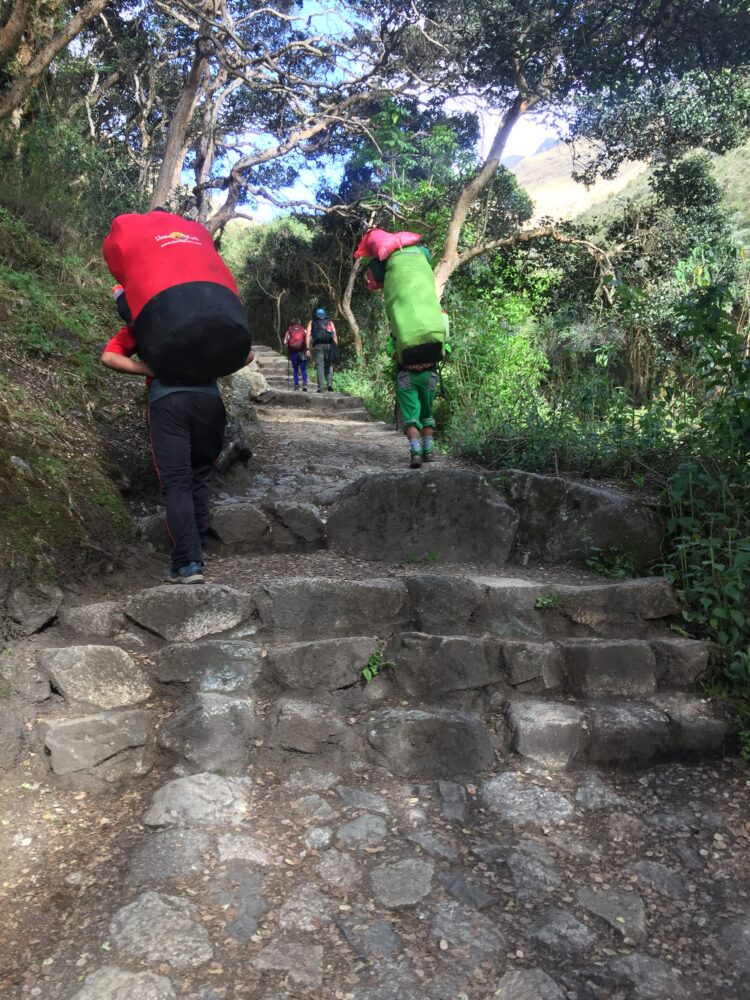
Should you bring a daypack to Peru?
Yes. Whether you’re using a carry-on travel backpack, a full size travel backpack or a hiking backpack I strongly suggest bringing a small daypack for your trip to Peru.
If you’re hiring a porter on hiking trips, your daypack will likely be sufficient to hold everything you need for the day on the trail (snacks, water, a couple layers) with the porter carrying your other items. This allows you to leave your bigger bulkier Travel backpack at the hostel with all your gear.
If you’re not using it specifically for trekking, a daypack can be nice to have for carrying extra layers, jackets or water while exploring incredible cities like Cusco or Arequipa.
For incredible flexibility and customization check out the Kiri Backpack.
Final Thoughts
That’s a wrap. Hopefully you’ve found these pointers helpful in your quest to find the best backpack for Peru. Drop me a line in the comments below if you have any questions or feedback on the post.
Happy adventuring!

